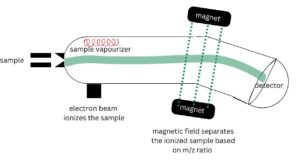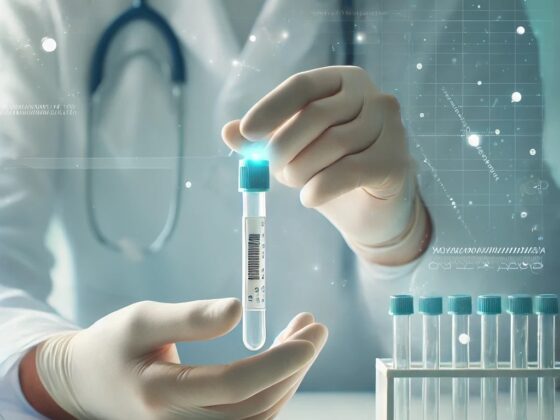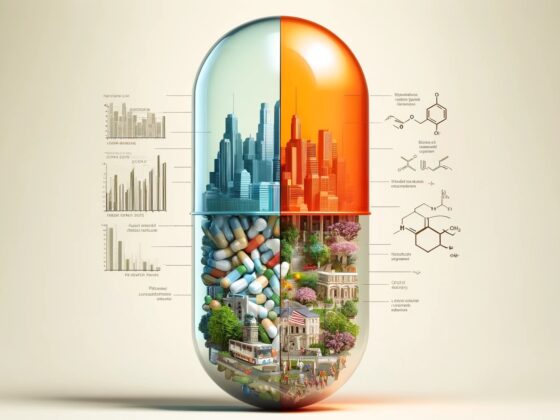In the United States, the opioid crisis remains a huge public health challenge, with a particularly alarming rise in fatalities linked to synthetic opioids like fentanyl. At ALLIANCE™, a pioneering approach is being undertaken by the toxicology department to combat this epidemic through advanced scientific techniques. One of the most powerful tools in their arsenal is mass spectrometry, a technique that not only enhances the detection of substances but also quantifies them with remarkable accuracy and precision.
How does Mass Spectrometry work?
Mass spectrometry (MS) works by measuring the masses within a sample to identify different substances based on their molecular weight. Molecular weight is unique and corresponds to a particular compound.
- A sample is introduced into a mass spectrometer
- It is ionized: Ionization is the process by which atoms or molecules are charged, either by gaining or losing electrons. This is done either by Electrospray Ionization or Matrix-Assisted Laser Ionization. Now the sample has a certain charge as well as a mass.
- Mass analyzer: The ionized particles are then directed into a mass analyzer, where they are separated based on their mass-to-charge ratio (m/z)
- Detection: After separation, the ions reach the detector where they are detected. The detector measures the quantity of ions at each m/z ratio, creating a spectrum of peaks that represent different particles in the sample.
- Analysis: The resulting data from the detector is then analyzed. This involves comparing the mass spectrum obtained from the sample with known spectra to identify and quantify the components of the sample.

mass spectrometry diagram
The Precision of Mass Spectrometry
The strength of mass spectrometry lies in its high precision and accuracy. In the context of opioid detection, these characteristics are invaluable. MS can detect specific ions that are known to correspond to particular opioids. By comparing these ions with known drug standards, scientists can confirm the presence of specific opioids in a sample. This method is not just effective for detection; it is also essential for quantifying the amount of the substance, providing vital data that can inform public health responses and medical treatments.
Application in Opioid Crisis
At ALLIANCE™, researchers in the toxicology department develop methods for the detection of fentanyl and other synthetic opioids, which is vital to public health to their potency, availability, and variability. Fentanyl, for instance, is about 100 times more potent than morphine, and even trace amounts can be deadly. Traditional drug testing methods often fall short in quickly identifying and quantifying such potent substances accurately. Mass spectrometry, however, can identify the specific mass of fentanyl in a sample, distinguishing it from other substances and ensuring highly accurate results.
Advancing Research and Public Safety
The research conducted at ALLIANCE™ is critical not only in enhancing our understanding of opioid dynamics but also in shaping public safety measures. By developing more sensitive and precise detection methods, the laboratory helps public health officials track trends in opioid misuse and effectively intervene in overdose outbreaks. Such testing helps build doctor-patient trust and increased public safety.



